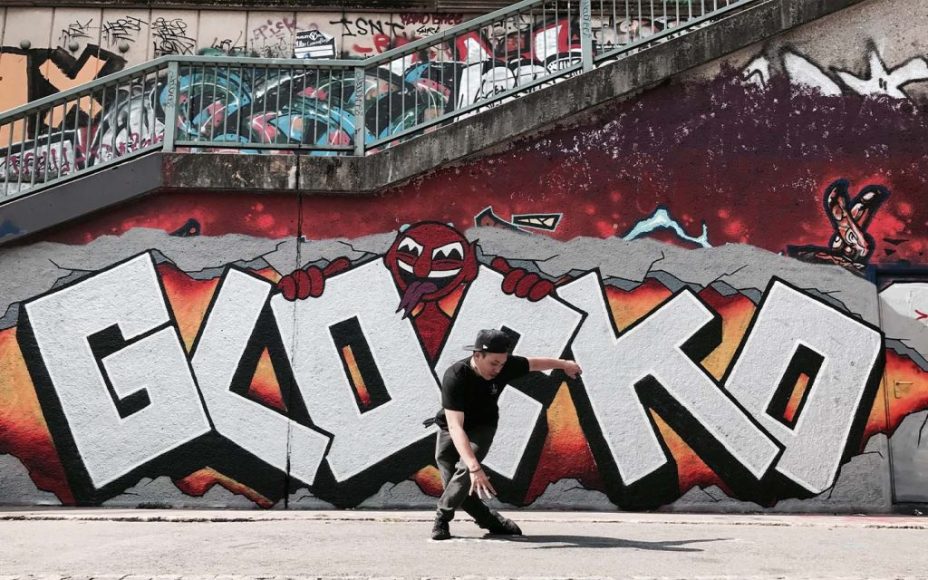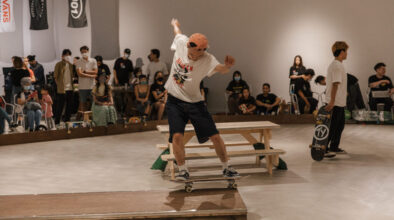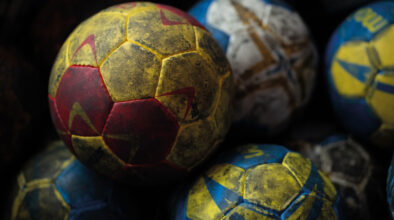Breaking has gained significant attention this year, thanks to its debut as an Olympic sport. However, few are aware of the vibrant “B” scene quietly bubbling away in Macao. Veteran B-boy Kaka Lam believes he may have inadvertently introduced the street dance style, which originated in New York City, to the Special Administrative Region around 2001, back when he was still studying at Saint Paul School.
Now 37, Lam recalls the moment that sparked his journey: discovering a videotape in a local clothing store that promised to teach viewers the basics of breaking. Intrigued, he bought it and, along with four friends, set out to learn. “We watched the video in slow motion, trying to understand every movement and technique,” Lam says. Each of them took responsibility for mastering one or two moves before teaching the rest of the group.

As they progressed, the young teens started practising their toprocks, six-steps and headstands in public parks and squares as well as in local dance studios. According to Lam, who now teaches breaking part-time while working as a freelance designer, the scene reached its peak in 2009. He says about 200 locals were involved in breaking classes and competitions back then, though numbers have since declined.
Lam was an active competitor during that period, racking up dozens of wins both locally and overseas. His most memorable success came in 2010, in Hong Kong, when he and his partner defeated around 90 other teams from across Greater China. Their win earned them the opportunity to compete in the US for the first time. But Lam’s always been more focused on the journey than destination: “Innovation is what I look to get out of it,” he says. He also appreciates the opportunities the sport has given him to travel.
“Breaking is an international culture, and exchanges and competitions have allowed me to get in touch with more of the world,” Lam says.
These days, Macao’s breaking pioneer spends more time organising and judging competitions than taking part in them himself. According to him, competitions aren’t merely a way to find out which B-boy or B-girl’s the best—they’re platforms to raise the sport’s profile with the public. Lam says he was happy to see breaking’s inclusion in the 2024 Paris Olympics, perhaps the biggest awareness raiser of all when it comes to sports.
‘You don’t have a set of rules’
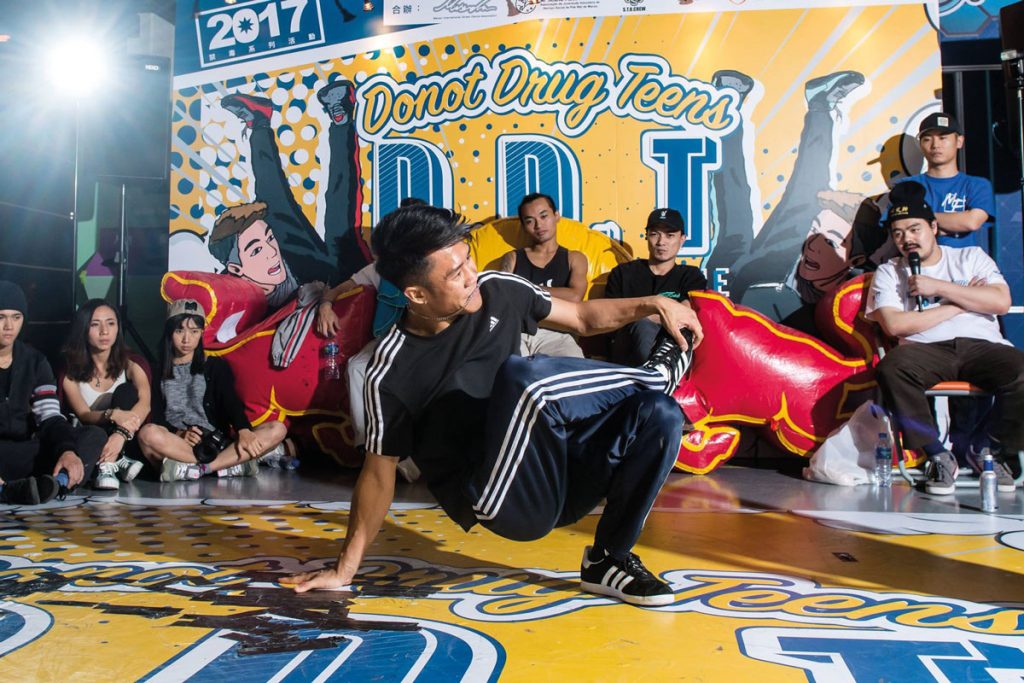
Another local B-boy, Paulo Mesa, shared Lam’s excitement when the Olympics news was announced (it will not return for the 2028 Games in Los Angeles). The 29-year-old told Macao magazine the added exposure had given the sport “a mainstream platform that can create more opportunities for us B-boys and B-girls, opening doors for people who want to do it full time.”
Mesa isn’t a full-time breaker, but he’s about as close to that as you can get in Macao – where the sport remains relatively obscure. The B-boy both teaches and competes in the sport, while also working full-time as an entertainment rigger. “Whatever time we have and money, we try to compete,” he says of his breaking crew, Supernova. “It’s hard, but when you love something and are passionate about it, it’s worth it.” So far, Mesa has travelled to the mainland, Hong Kong, Taiwan and Vietnam for competitions.
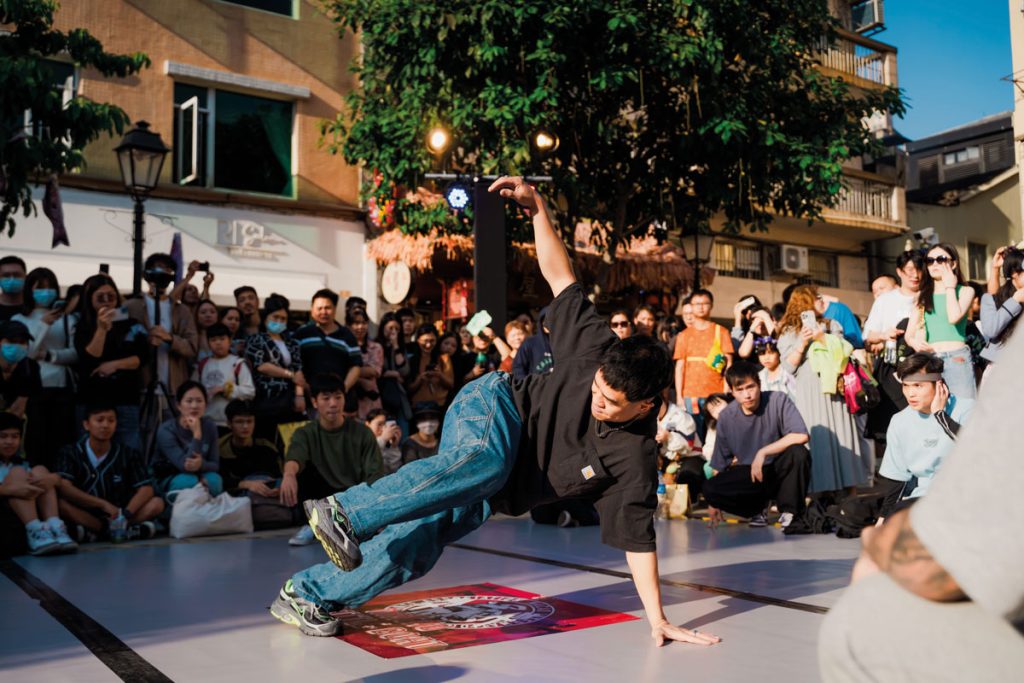
A self-described “big sports guy”, Mesa is also into skateboarding, surfing and basketball – but they all feed into his biggest passion, breaking. “Having different kinds of hobbies and interests inspires your creativity, which can then translate into breaking,” he explains.
“That’s the wonderful thing about breaking. You don’t have a set of rules; you get to insert a lot of cool styles, individuality, character, originality and even musicality into your moves. It’s all about self-expression, right?”
Originating in the Bronx
Indeed, breaking has always been highly improvisational. It first emerged in the early 1970s, at the disco clubs and street parties of the Bronx, New York City, where the dance form quickly became a staple of hip-hop culture. With no formal choreography, B-boys and B-girls had the freedom to invent moves and sequences based on the energy of the moment. That spontaneity (known as freestyling) remains essential during face-offs, where breakdancers respond to their opponents on the fly.
Stars of that hip-hop zeitgeist were the Rock Steady Crew, Grandmaster Flash and Run-D.M.C. Common moves that evolved back then include toprock (performed standing upright), downrock (ground-based manoeuvres), freezes (posing in a static position, such as a handstand) and power moves (high-energy and acrobatic).
According to Mesa, breaking had reached a new, wider audience by the early 2010s thanks to video streaming platforms. That’s how he started picking up the basics, through watching so-called cyphers (the circular space formed by a group of breakdancers, where individuals take turns showcasing their moves) and battles online. “Some of the first moves I learned that way were handstand freezes and cartwheels,” he recalls.
But Mesa’s first ever encounter with breaking was in person, when he was about 13. He remembers watching a local crew of B-boys and B-girls – likely including Lam – holding cyphers during the annual Macao International Fireworks Display Contest next to Macao’s Nam Van Lake. “I was captivated by the energy and skill on display,” Mesa says. “That’s what actually inspired me to learn about breaking online.”
‘Passing the torch’
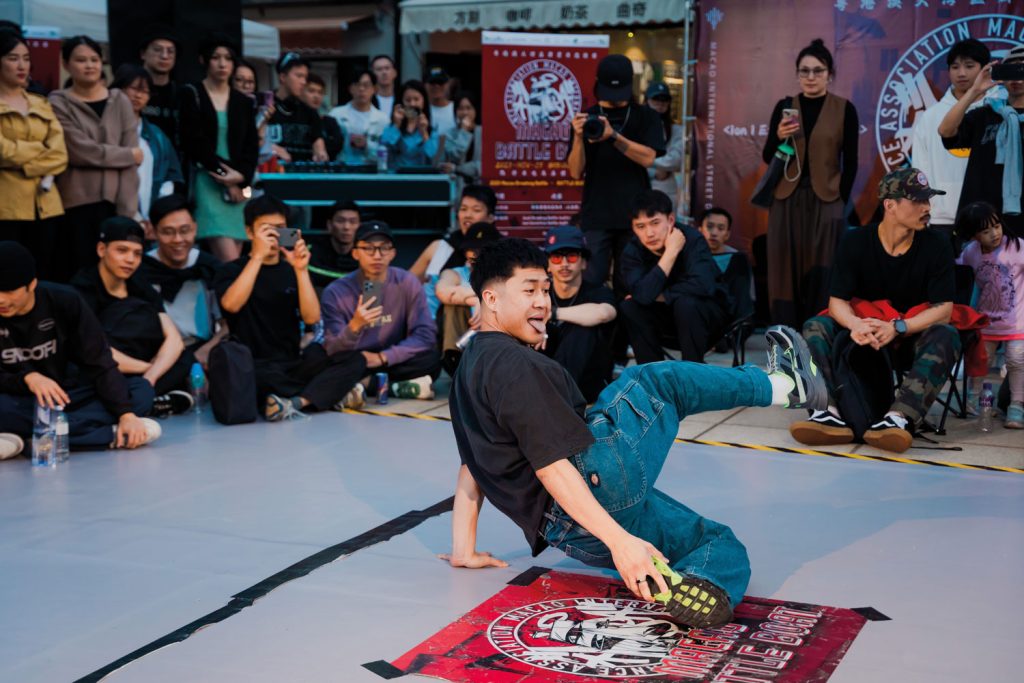
At first, Mesa didn’t know anyone else breaking in Macao. But his reputation as a budding B-boy was growing, and he was soon approached by another dedicated fan of the style – Macao-born Filipino Ruperto Abelgas, who prefers to go by Rupz. “Rupz came up to me and asked me to teach him the windmill and cricket [two breaking moves],” Mesa says of their meeting. He remembers Abelgas taught him some other moves in return, and inspiring him to take breaking more seriously.
Together, the pair started looking for a more senior B-boy who could hone their skills further. Fortunately, they found a supportive mentor in local breaking pioneer Rock Lee (now known as Zi Yang), a friend of Lam’s. “He kind of gave us a whole hour or two explanation of what breaking really means, showing us different moves and how they’re supposed to be done,” Mesa says. “We were just little kids sitting on the floor looking up at him, wide-eyed. It was like, ‘Wow, this guy is the real deal.’”
That was around 2010, and Mesa says he also got to know Lam around that time – describing him and Zi as the breakers who “put Macao on the map”. The community warmly welcomed Mesa and Abelgas, despite their young age: “People were happy to see us because it was like passing the torch, having this new generation come around.”
After four months of staying up late to practice, typically in their families’ living rooms, Mesa and Abelgas entered their first competition organised by senior B-boys in Macao. While they didn’t fare well, Mesa says he believes he and his friend “earned some respect” for their passion. And not long afterwards, in 2010, they reached the semi-finals at a junior competition in Hong Kong. Their first win came as a trio, with another friend named Thai Jai (Mesa also won a solo event at the same competition).
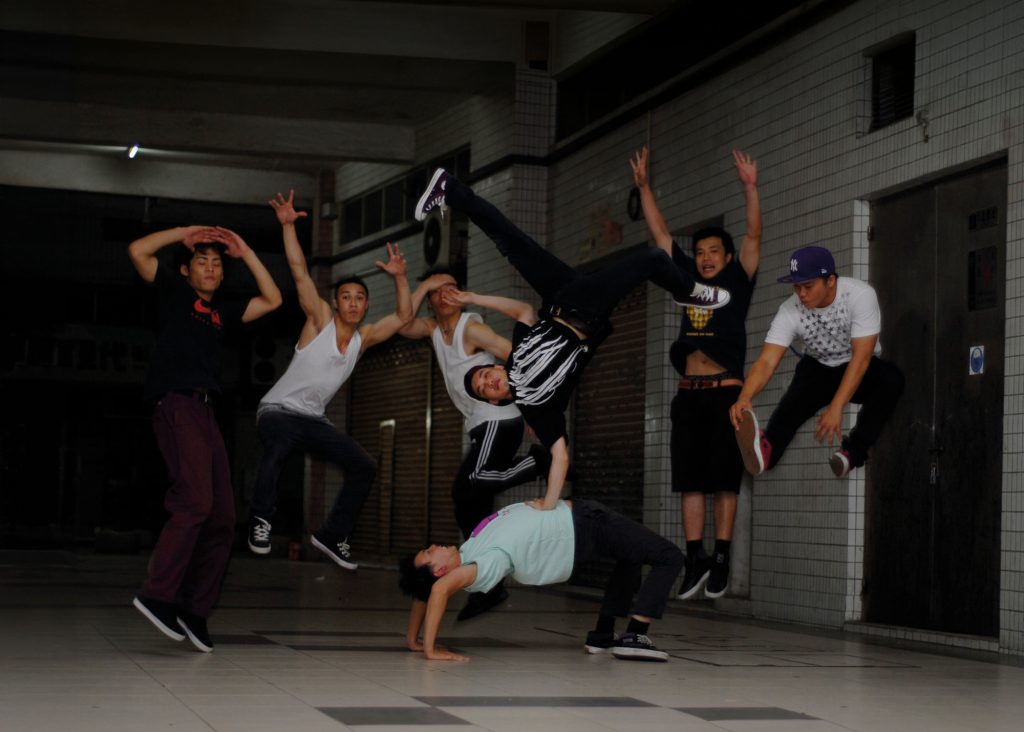
“It was memorable because it was unexpected,” Mesa says. “We were just young kids taking on bigger people and that proved that we were actually good.”
More recently, Mesa tried out for the Macao breaking team. After a long selection process, he ranked No. 1 out of the 20 selected participants. “Reflecting on my growth, I believe I can confidently say I’m one of the top breakers in Macao right now,” Mesa says with pride.
Macao’s breaking scene is smaller now than it was 15 years ago, but those in the know – like Mesa and Lam – are deeply passionate about its survival. They point out that while some B-boys and B-girls are highly competitive, like Mesa, others practice breaking for the fitness benefits. Many of Mesa’s breaking buddies are actually firefighters and policemen using the sport to improve their strength and agility.
Mesa’s eager to see the scene expand, and can envision himself organising more local events in the future as a way to give back to his community. “But my primary goal now is to continually improve my skills and represent Macao on larger platforms,” he says. “By showcasing our talent, I hope to inspire the next generation and create more opportunities for breakers in Macao.”
